hbeaton
Sr. Member
- Joined
- Jun 4, 2005
- Messages
- 354
- Reaction score
- 808
- Golden Thread
- 0
- Location
- Virginia Beach, VA
- Detector(s) used
- Minelab E-Trac
Have not posted finds in awhile but have been out hunting quite a bit. Had a great weekend and found a few goodies! Silver quarter, multiple silver dimes, Indian head penny, several varieties of nickels (buffaloes and V nickels), a cool transit token and the awesome find is a coin ring made from a 1917 French 1 Franc silver coin. The coin is marked Meuse which is the region in France where the WW1 Battle of Verdun was waged. Very likely a French veteran dropped it or, more likely, picked up or gifted to a WW1 US Soldier who brought it home. Coins are in rough shape but it's good.
Coins for the most part were in bad shape. 1905 and 1900 on the V nickels, a couple dateless Buffaloes and one readable 1936. 1916 (no D damn), 1918 and 1939 Mercs. 1942 Quarter. 1904 Indian. Cool Virginia Electric transit token (stopped around 1944). Also found a Norfolk Western Railway boxcar seal (not pictured).
Now for some detector talk. Moved from the Andy Sabisch Silver pattern on the Etrac to two tone ferrous. What a difference! I found certain deeper signals that if I switched to the Andy program before digging, the signal was not a strong (that I may not have dug otherwise). I feel the two tone ferrous helps on the Etrac especially in known areas of iron. I have hit several sites with the Andy program but returning to them with two tone ferrous I have "sniped" out several coins I would have missed.
Not sure of this will be the case in all situations but it seemed to help me a bit. I flirted with the 4 tone ferrous mode but found it a bit distracting. I can easily hear the difference between "dunk dunk" iron noises and the other tone which is for possible good targets and if the FE numbers line up to typical coin signals, I have had some luck. I also noticed for deeper coins such as nickels or even deep wheats, a reading of 1-35 or 1-12, 1-14 can still mean a deep coin rather than typical 12-35/37 or 12-42/43 or 12/12. Just observations. As you can tell I have been digging more nickel signals with some good results. Most buffaloes found in a year in a couple hunts.
Thanks for reading and happy hunting!
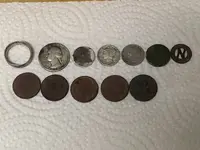
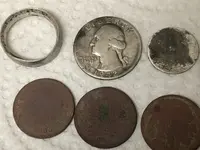
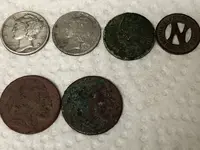
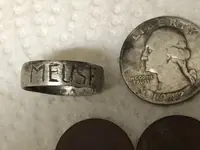
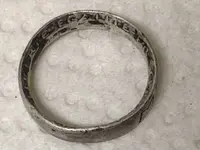
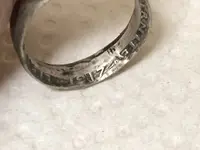
Coins for the most part were in bad shape. 1905 and 1900 on the V nickels, a couple dateless Buffaloes and one readable 1936. 1916 (no D damn), 1918 and 1939 Mercs. 1942 Quarter. 1904 Indian. Cool Virginia Electric transit token (stopped around 1944). Also found a Norfolk Western Railway boxcar seal (not pictured).
Now for some detector talk. Moved from the Andy Sabisch Silver pattern on the Etrac to two tone ferrous. What a difference! I found certain deeper signals that if I switched to the Andy program before digging, the signal was not a strong (that I may not have dug otherwise). I feel the two tone ferrous helps on the Etrac especially in known areas of iron. I have hit several sites with the Andy program but returning to them with two tone ferrous I have "sniped" out several coins I would have missed.
Not sure of this will be the case in all situations but it seemed to help me a bit. I flirted with the 4 tone ferrous mode but found it a bit distracting. I can easily hear the difference between "dunk dunk" iron noises and the other tone which is for possible good targets and if the FE numbers line up to typical coin signals, I have had some luck. I also noticed for deeper coins such as nickels or even deep wheats, a reading of 1-35 or 1-12, 1-14 can still mean a deep coin rather than typical 12-35/37 or 12-42/43 or 12/12. Just observations. As you can tell I have been digging more nickel signals with some good results. Most buffaloes found in a year in a couple hunts.
Thanks for reading and happy hunting!






Amazon Forum Fav 👍
Upvote
29




